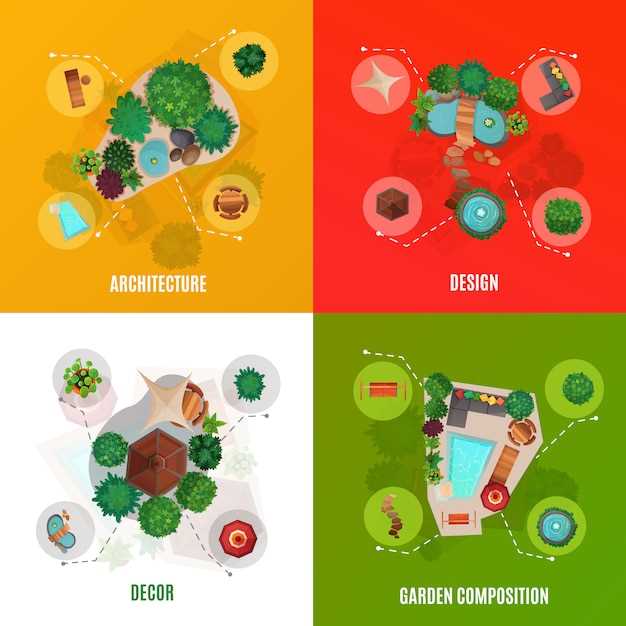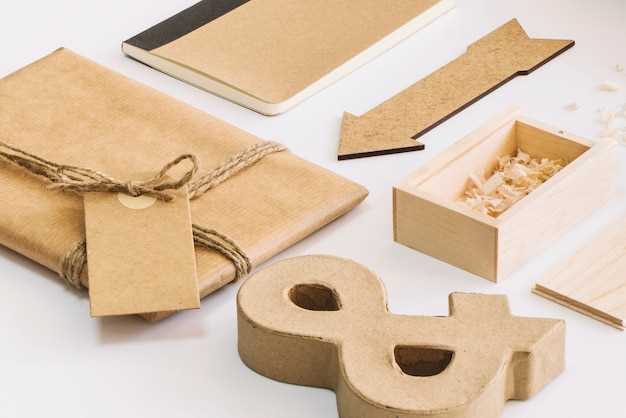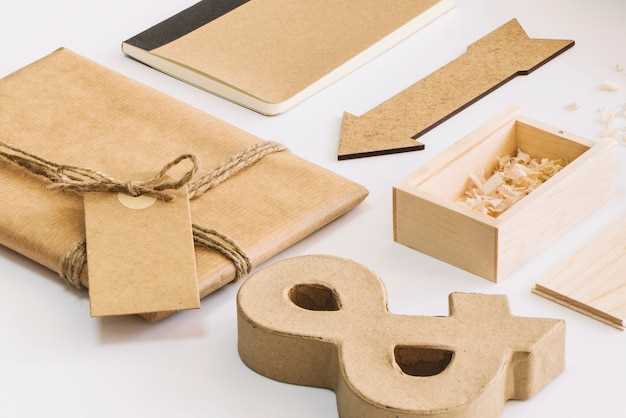Sustainable Flooring Options for Australian Homes
If you want to create an eco-friendly home, consider bamboo flooring. Bamboo is a fast-growing grass that matures in just three to five years, making it a highly renewable resource. This flooring type is not only durable and stylish but also offers significant moisture resistance, making it ideal for various Australian climates.
Another fantastic choice is cork flooring. Cork is harvested from the bark of cork oak trees without harming the tree itself, allowing for a sustainable cycle of harvesting. This material provides excellent insulation and comfort underfoot, and its natural properties help reduce noise, enhancing your living environment. Look for brands that utilize eco-friendly adhesives to ensure your flooring remains free from harmful chemicals.
For those who prefer traditional timber, opt for reclaimed wood. Using salvaged timber helps reduce waste and gives your home a unique character. A variety of Australian hardwoods, like oak or Blackbutt, not only bring warmth and beauty but also boast longevity. Ensure you choose brands that source timber responsibly, prioritizing FSC-certified products.
Finally, consider linoleum as a versatile option. Made from natural materials like linseed oil and wood flour, linoleum is biodegradable and can last for decades with proper care. It’s available in countless colors and patterns, allowing you to express your style while supporting sustainability.
Benefits of Choosing Recycled Wood Flooring

Recycled wood flooring stands out due to its eco-friendliness and unique aesthetics. This choice not only reduces waste but also provides a distinctive character to your home with every plank telling its own story.
Environmental Advantages
Opting for recycled wood means less demand for new timber, which helps preserve forests. This practice contributes to a significant reduction in carbon emissions compared to traditional flooring options. Recycled wood often comes from reclaimed sources like old buildings, furniture, and industrial materials, minimizing environmental impact and promoting sustainability.
Cost-Effectiveness
Recycled wood flooring can be more affordable than newly harvested timber. Because it reuses existing materials, the cost associated with harvesting and transporting new wood decreases. Additionally, as this flooring can age beautifully, it may require less maintenance in the long run, further enhancing savings.
| Benefits | Description |
|---|---|
| Eco-Friendly | Reduces demand for new timber and preserves forests. |
| Unique Character | Each plank has history, adding personality to the space. |
| Cost-Effective | Lower costs and reduced maintenance over time. |
| Durability | Often more resilient, lasting longer than new timber. |
Incorporating recycled wood flooring is a practical and stylish decision. It brings both environmental and financial benefits, ensuring you make a responsible choice for your Australian home while enhancing its beauty.
How to Source Recycled Wood Flooring Locally

Check local salvage yards and architectural reclamation stores. These places often carry a variety of reclaimed wood options, including flooring. Visit them regularly as inventory changes frequently. You may find unique wood types with interesting history.
Join local online marketplaces and community groups focused on sustainable building materials. Platforms such as Facebook Marketplace or Gumtree can yield great finds from individuals looking to sell surplus materials. Search with specific keywords like “reclaimed wood flooring” for relevant listings.
Contact local timber merchants who specialize in environmentally friendly products. They may offer recycled wood flooring or direct you to suppliers that do. Some merchants also provide information on regional building programs that focus on sustainability practices.
Explore wood flooring manufacturers that prioritize recycled materials. Look for brands based in Australia that specifically use local reclaimed timber. This not only reduces transportation emissions but also supports local businesses.
Attend sustainable home expos or community workshops. These events often showcase eco-friendly building materials and provide networking opportunities with local suppliers and contractors. Collect brochures or business cards for future reference.
Consider reaching out to local carpenters or builders who focus on renovation projects. They might have leftover materials or know where to source reclaimed wood. Establishing a relationship can lead to valuable recommendations.
Research mobile apps or websites dedicated to sustainable materials. Some platforms aggregate listings from various sources, making it easier to find recycled wood flooring locally. Signing up for alerts can keep you informed about new arrivals.
Installation Techniques for Sustainable Flooring Materials

Begin by assessing the subfloor condition. Ensure it is clean, dry, and level to provide a solid foundation for sustainable flooring. For wood or bamboo, address any moisture issues by sealing the subfloor with a moisture barrier.
Choose the appropriate installation method based on the material:
- Click Lock Systems: Ideal for laminate and some vinyl options. Align the planks at a 45-degree angle and lock them into place, ensuring a tight fit without glue or nails.
- Glue Down Technique: Common for cork and certain vinyl floors. Apply a recommended adhesive evenly on the subfloor, then lay down your flooring, ensuring no air pockets remain.
- Nail or Staple Down: Suitable for solid hardwood. Pre-drill the tongue and drive the nails or staples through the tongue at an angle, avoiding damage to the plank surface.
- Floating Floors: Perfect for engineered wood or laminate. Lay the planks edge to edge, using spacers along the perimeter to allow for expansion. This method permits easy removal in the future.
Temperature affects many materials, so acclimatize flooring before installation. Leave the planks in the room for at least 48 hours, allowing them to adjust to the environment.
Ensure proper expansion gaps at walls and fixtures. This space allows flooring to expand without warping or buckling. Generally, a 10mm gap is sufficient.
After installation, clean the flooring according to manufacturer recommendations. Regular maintenance prolongs the lifespan of sustainable options.
Consult professional guidelines and local building codes for specific requirements in your area. Following these steps ensures a successful installation of sustainable flooring materials.
Maintenance Tips for Longevity of Sustainable Floors

Regular cleaning prevents dirt build-up and scratches. Use a soft broom or a vacuum cleaner without a beater bar to remove debris.
For wet cleaning, utilize a damp mop with a pH-neutral cleaner specifically designed for your flooring type. Excess moisture can harm wood and other materials, so always wring out the mop thoroughly.
- For hardwood: Apply a specialized wood cleaner monthly to maintain its shine. Avoid harsh chemicals and wax that can damage the wood finish.
- For bamboo: Treat it similarly to hardwood. Regular polishing with a suitable cleaner enhances its natural beauty and protects against scratches.
- For cork: Use a damp cloth for spot cleaning and a mild soap solution for deeper cleans. Reseal every few years to keep it moisture-resistant.
Place mats at entryways to reduce dirt tracked indoors. This small step can extend the life of your floors significantly.
Monitor humidity levels. Sustainable floors like wood and cork thrive in stable environments. Aim for humidity levels between 30-50% to prevent warping or cracking.
Address spills immediately. Blot liquids with a clean cloth, avoiding rubbing that can cause additional damage.
- Conduct a periodic inspection for damage.
- Repair scratches or dents promptly using kits recommended for your floor type.
- Consider professional refinishing when significant wear occurs, particularly for hardwood floors after many years of use.
Maintain consistent temperature levels in your home to protect flooring from expansion and contraction. Avoid direct sunlight exposure through curtains or UV-blocking films on windows.
Following these maintenance strategies will keep your sustainable flooring looking beautiful and lasting for years. Regular care minimizes the need for replacements, aligning with sustainability principles while enhancing your home’s comfort and aesthetics.
Cost Comparison: Recycled vs. Traditional Flooring Options
Recycled flooring options often present a more budget-friendly choice compared to traditional materials. For instance, reclaimed wood flooring can be priced between AUD 70 to AUD 150 per square meter, while new hardwood typically ranges from AUD 100 to AUD 250 per square meter. This difference not only reflects the material sourcing but also the manufacturing processes involved.
Installation Costs
Installation costs vary but tend to be similar across both recycled and traditional flooring. Expect to pay around AUD 30 to AUD 60 per square meter for installation, depending on the type of flooring and the complexities of the project. However, with recycled materials, you might find benefits such as easier handling and lighter weight, which can reduce labor time.
Long-Term Savings
Consider the long-term savings from choosing recycled flooring. Many recycled options, such as bamboo or cork, offer enhanced durability and lower maintenance requirements. While the initial cost may seem similar to traditional choices, the reduced maintenance can yield savings over time. For example, cork flooring, priced around AUD 50 to AUD 130 per square meter, provides natural insulation and does not require wax or polish, significantly lowering upkeep costs.
Environmental Impact of Different Flooring Choices
Choosing bamboo flooring significantly reduces deforestation impacts. Bamboo grows rapidly, making it a renewable resource. Look for products certified by the Forest Stewardship Council (FSC) to ensure sustainable harvesting practices.
Solid hardwood floors, while beautiful, often come from endangered tree species. Opting for reclaimed wood minimizes environmental damage and promotes recycling. This choice eliminates the need for new trees while imparting character to your space.
Vinyl flooring, on the other hand, raises concerns. Its production involves fossil fuels, leading to higher greenhouse gas emissions. However, newer options utilize recycled materials and have lower VOCs (volatile organic compounds), which are safer for indoor air quality.
Cork flooring offers an eco-friendly alternative. Harvested from the bark of cork oak trees, it is renewable and biodegradable. This material also provides natural insulation and reduces sound transmission, enhancing home comfort.
Carpet made from recycled materials, such as PET plastic, contributes positively to sustainability efforts. Choose brands that provide transparency in sourcing and production processes, ensuring minimal environmental footprint.
Concrete floors rank high in durability and can be sourced locally, reducing transportation emissions. A polished finish enhances aesthetics while providing a long-lasting option, though consider heat retention based on your climate.
For a balance of sustainability and comfort, consider linoleum. Made from natural materials like linseed oil and cork, it’s biodegradable and has a low environmental impact. Regular maintenance extends its life, reducing waste.
In your search for flooring, prioritize transparency regarding sourcing and production methods. The right choice enhances your home’s appeal while minimizing harm to the planet.
Design Ideas Utilizing Sustainable Flooring Options
Choose bamboo flooring for its strength and elegance. The natural grain adds warmth, making it perfect for contemporary and traditional spaces alike. Use wide planks in living areas for a seamless, spacious look.
A cork floor provides a unique texture and excellent insulation. Install cork tiles in kitchens or home offices for comfort underfoot and noise reduction. Pair with light cabinetry to create an airy atmosphere.
Reclaimed wood flooring offers a rustic charm while promoting sustainability. Highlight the natural imperfections by selecting a matte finish. Incorporate it into dining rooms or hallways for an inviting touch.
For a modern aesthetic, consider polished concrete. Its durability and low maintenance make it ideal for high-traffic areas. Use it in combination with natural textiles, such as wool rugs, to soften the space.
Linoleum is another eco-friendly choice, available in a myriad of colors and patterns. Install it in children’s playrooms or laundry areas for a playful look. The durability and easy maintenance enhance its appeal.
Try combining different flooring materials in an open plan layout. Use bamboo in the kitchen, cork in a cozy reading nook, and reclaimed wood in the living area to create defined spaces while maintaining cohesion.
Integrate sustainable flooring with green decor elements. Choose furniture made from recycled materials and live plants to accentuate the natural aesthetic of your space.
Certifications and Standards for Sustainable Flooring Products
Look for flooring products certified by organizations like the Forest Stewardship Council (FSC). FSC certification ensures that wood comes from responsibly managed forests that provide environmental, social, and economic benefits.
GECA Certification
Choose products with Good Environmental Choice Australia (GECA) certification. GECA verifies that the materials meet rigorous sustainability standards, focusing on lifecycle impacts and resource efficiency.
GreenTag Certification
Consider flooring options with Global GreenTag certification. This program assesses products based on their health, safety, and environmental impacts, providing transparency through a clear rating system. It helps you identify low-impact and healthier products for your home.
Check for compliance with Australian standards such as AS/NZS 3837 for fire hazard properties and AS/NZS 4586 for slip resistance. These standards ensure that flooring materials not only support sustainability but also promote safety in living spaces.
Look into eco-labels like the Australian Eco Mark, indicating that products meet stringent environmental criteria, including energy use, waste reduction, and material sustainability. These labels help simplify the decision-making process for eco-conscious consumers.
By prioritizing certified products, you contribute to a sustainable environment while ensuring safety and quality in your home. Make informed choices in your flooring selection for a greener future.
Video:
NEVER TOO SMALL: Artist’s Tiny Beach Shack Australia – 30sqm/323sqf
NEVER TOO SMALL: Artist’s Tiny Beach Shack Australia – 30sqm/323sqf by NEVER TOO SMALL 667,940 views 2 years ago 7 minutes, 59 seconds
Q&A:
What are some eco-friendly flooring options available for Australian homes?
There are several eco-friendly flooring options suitable for Australian homes. Bamboo is a popular choice due to its rapid growth and renewability. Cork is another sustainable option, harvested from the bark of cork oak trees without harming the tree itself. Reclaimed wood is also environmentally friendly, as it reutilizes old timber, reducing the demand for new materials. Additionally, concrete floors can be made more sustainable when using recycled aggregates or additives that lessen their environmental impact.
How can I determine if a flooring material is sustainable?
To determine if a flooring material is sustainable, consider its sourcing, lifecycle, and production process. Look for certifications such as FSC (Forest Stewardship Council) for wood-based products, which ensures responsible forestry practices. Additionally, check if the material is made from renewable resources or recycled content. Research the energy consumption during the manufacturing process and whether harmful chemicals or finishes are used, as these can negatively impact indoor air quality and the environment.
Are there any specific flooring materials that are better suited for the Australian climate?
Yes, certain flooring materials perform better in the Australian climate. For warmer regions, tiles can be an excellent choice due to their thermal mass, helping to keep homes cool. Similarly, bamboo and cork offer natural thermal properties and are moisture-resistant. In coastal areas, it’s wise to choose materials resistant to humidity and salt exposure, such as engineered wood or tiles. Overall, select materials that can withstand temperature fluctuations and humidity common in Australian climates.
What are the maintenance requirements for sustainable flooring options?
Maintenance requirements for sustainable flooring options can vary widely. Bamboo and cork generally require regular sweeping and occasional damp mopping. They may benefit from periodic sealing to protect against water damage. Reclaimed wood can require specific cleaning products to avoid harming the finish. Concrete floors often need a sealant to prevent staining, while tiles are generally easy to clean and maintain. It’s always advisable to follow the manufacturer’s recommendations for specific maintenance practices for each flooring type.
What are the cost implications of choosing sustainable flooring materials?
Choosing sustainable flooring materials can vary in cost. Initial investments in eco-friendly options like bamboo, cork, or reclaimed wood may be higher than conventional flooring. However, these materials can offer long-term savings through durability and energy efficiency. Additionally, some options, like concrete, can be less expensive depending on the finish applied. It’s also important to consider the potential increase in property value from using sustainable materials, making the overall investment worthwhile.
What are some eco-friendly flooring options available for homes in Australia?
There are several eco-friendly flooring options suitable for homes in Australia. Bamboo flooring is a popular choice due to its rapid growth and renewability. It’s durable and can withstand heavy traffic. Another good option is cork flooring, harvested from the bark of cork oak trees, which is both renewable and offers excellent insulation properties. Reclaimed wood flooring is an environmentally friendly choice as it utilizes wood that would otherwise be wasted, giving it a unique character. Additionally, linoleum made from natural materials like linseed oil, wood flour, and jute can be a sustainable flooring choice as well. Each of these options provides various aesthetic and performance benefits while being kinder to the environment.
































